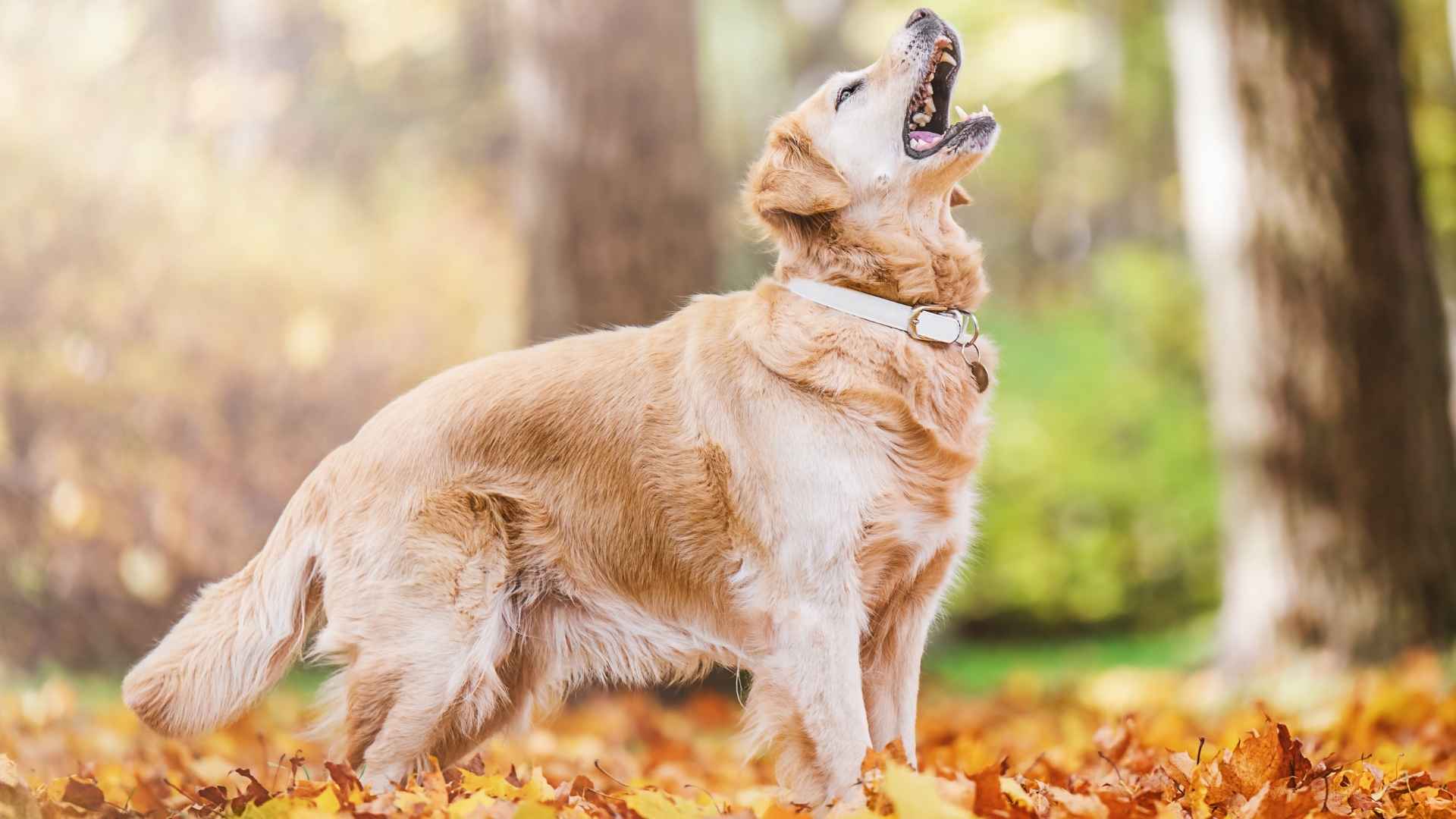When it comes to choosing a loyal four-legged companion, alertness is a trait many dog lovers prioritize, especially those seeking a natural watchdog or a vigilant friend. Alert dog breeds stand out for their sharp instincts, quick reactions, and keen awareness of their surroundings. Whether it’s the rustle of a leaf or an unfamiliar footstep at the door, these dogs are always one step ahead.
Their heightened senses and natural protective drive make them ideal for families, individuals, and even first-time dog owners who value security and companionship. But being alert doesn’t mean being aggressive—these breeds are often affectionate, intelligent, and deeply bonded with their humans.
If you’re looking for a canine companion that blends loyalty, awareness, and unwavering attention, you’re in the right place. This article explores the world of alert dog breeds that don’t just watch your back—they do it with heart and purpose.
Alert Dog Breeds
1. German Shepherd
The German Shepherd is one of the most recognized alert dog breeds in the world, known for its high intelligence, strong protective instincts, and unwavering loyalty. Originally bred for herding and guarding sheep, this breed quickly proved itself as an ideal working dog in law enforcement and military roles.
This is attributed to its natural vigilance and quick response to unfamiliar sounds or movements. Their sharp senses and acute awareness of their surroundings make them highly dependable watchdogs capable of detecting danger before it escalates.
Despite their alertness, German Shepherds are not excessively noisy or reactive without cause. They typically reserve barking for situations that genuinely warrant attention, such as an unexpected visitor or a perceived threat. This level-headed behaviour, combined with their trainability, ensures that they are effective protectors without being a source of constant stress or noise.
PetMD states German Shepherds are quick learners, often excelling in obedience and protection training. They can be taught to respond to subtle cues and differentiate between normal and suspicious behaviour. This makes them exceptional companions in homes looking for more than just a family pet—they’re reliable guardians who remain on high alert when necessary, yet calm and composed around trusted individuals.
German Shepherds have a striking presence—muscular, agile, and poised. Their upright ears and intense gaze convey attentiveness, often giving away their ever-watchful mindset. A strong work ethic backs this physical alertness. Whether patrolling a property or accompanying their owner on a walk, they remain engaged and responsive, always ready to react with speed and purpose if needed.
The German Shepherd is renowned for its alert nature, making it one of the most effective and versatile working dogs around. Whether it’s serving as a service dog, providing emotional support, or assisting with mobility support, this breed is highly regarded for its intelligence, adaptability, and focus.
Many German Shepherds are commonly trained to perform a wide range of complex tasks, from guiding the visually impaired to helping with psychiatric support. They also play a critical role in assisting people with mental disabilities or mobility-impaired individuals, helping with daily tasks and offering companionship.
2. Belgian Malinois
The Belgian Malinois is a highly alert and driven dog breed known for its exceptional responsiveness and keen awareness of its environment. Agile, intelligent, and intensely focused, this breed is quick to detect unfamiliar sounds, scents, or movements, making it a top choice for high-alert tasks.
Bred originally for herding, the Malinois has evolved into a premier working dog, especially in roles that require constant vigilance. Its alert nature, paired with unmatched energy and trainability, has made it indispensable in military and police units around the world.
The breed’s natural suspicion of strangers and instinct to guard are balanced by its ability to remain calm under pressure. It doesn’t overreact but instead watches, waits, and acts with precision when necessary—traits that are vital in tactical operations and security scenarios.
In the field, Belgian Malinois are used for detection work, search and rescue, tracking, and apprehension. Their sharp senses and high responsiveness make them ideal for detecting explosives and narcotics or locating missing persons in challenging conditions.
Their alertness isn’t limited to work—they also make excellent home protectors. With the right training and leadership, they become devoted companions who stay vigilant without being anxious or reactive, always tuned in to potential changes in their environment.
However, their alert nature demands proper mental stimulation and structured tasks. Without these, their energy can turn into restlessness. In the right hands, though, the Belgian Malinois is an elite guardian—sharp-eyed, quick-thinking, and fearless in action.
3. Doberman Pinscher
The Doberman Pinscher is often described as the perfect blend of elegance and intensity—a breed that doesn’t just look alert but lives in a constant state of keen awareness. With a statuesque frame and piercing eyes that seem to assess everything in a room within seconds, the Doberman isn’t merely attentive—it’s wired for vigilance.
Originally developed in the late 1800s by German tax collector Louis Dobermann, this breed was purpose-built to protect, escort, and react with precision.
There’s an unmatched sharpness to how a Doberman operates. It’s not jumpy or frantic; it’s calculated and composed. This makes them superb in roles where both brains and brawn are required. You’ll find them excelling in law enforcement, personal protection, and military work—not because of sheer power, but due to their quick decision-making and innate sense of when something’s “off.”
Unlike dogs that require direction to respond, Dobermans anticipate. They’re deeply intuitive and have a strong sense of territory, making them natural guardians without constant training. What’s more, they combine this alertness with incredible speed and agility—traits that allow them to not only detect threats but also respond swiftly and effectively if needed.
But don’t let their sleek, intense exterior fool you. A well-socialized Doberman is affectionate, loyal, and deeply tuned in to the emotional cues of their humans. They can be gentle protectors of children, doting family members, and loving companions, always with one ear perked for anything unusual.
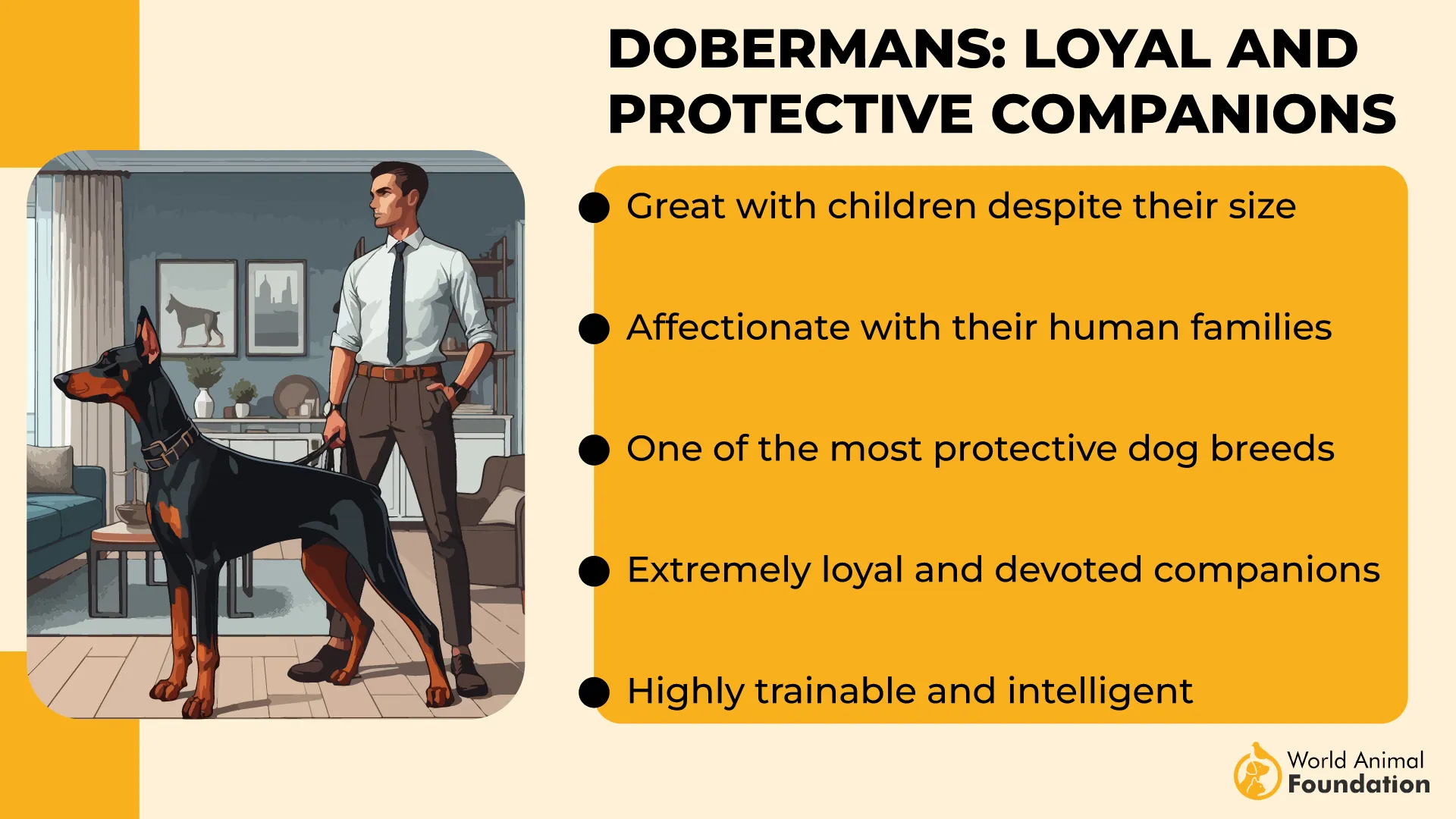
This breed doesn’t thrive on passivity. It craves purpose, challenge, and a connection with its owner. When you give a Doberman a job—whether it’s guarding, training, or even canine sports—you’re unlocking the full spectrum of its potential. Its alertness isn’t just a feature. It’s the very core of what makes this breed exceptional.
4. Rottweiler
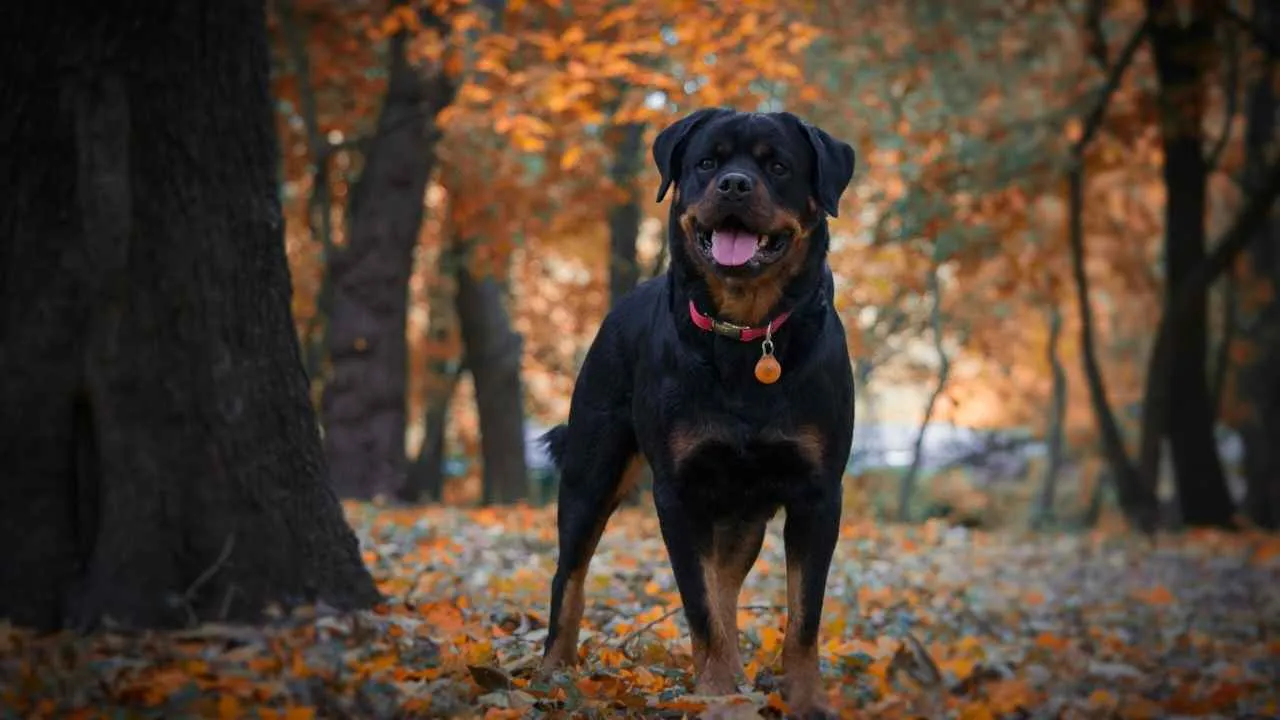
The Rottweiler is an exceptional breed, known for its sharp senses and natural protective instincts. These traits make it an ideal choice for various working roles, including law enforcement, search and rescue, and as a guard dog. Their heightened awareness allows them to detect potential threats quickly, making them invaluable in these settings.
Originally bred for herding livestock and pulling carts, the Rottweiler’s history laid the groundwork for its alert nature. Over time, the breed evolved into a versatile working dog, serving in military, police, and rescue roles. This background has fine-tuned their ability to stay focused and responsive in any environment.
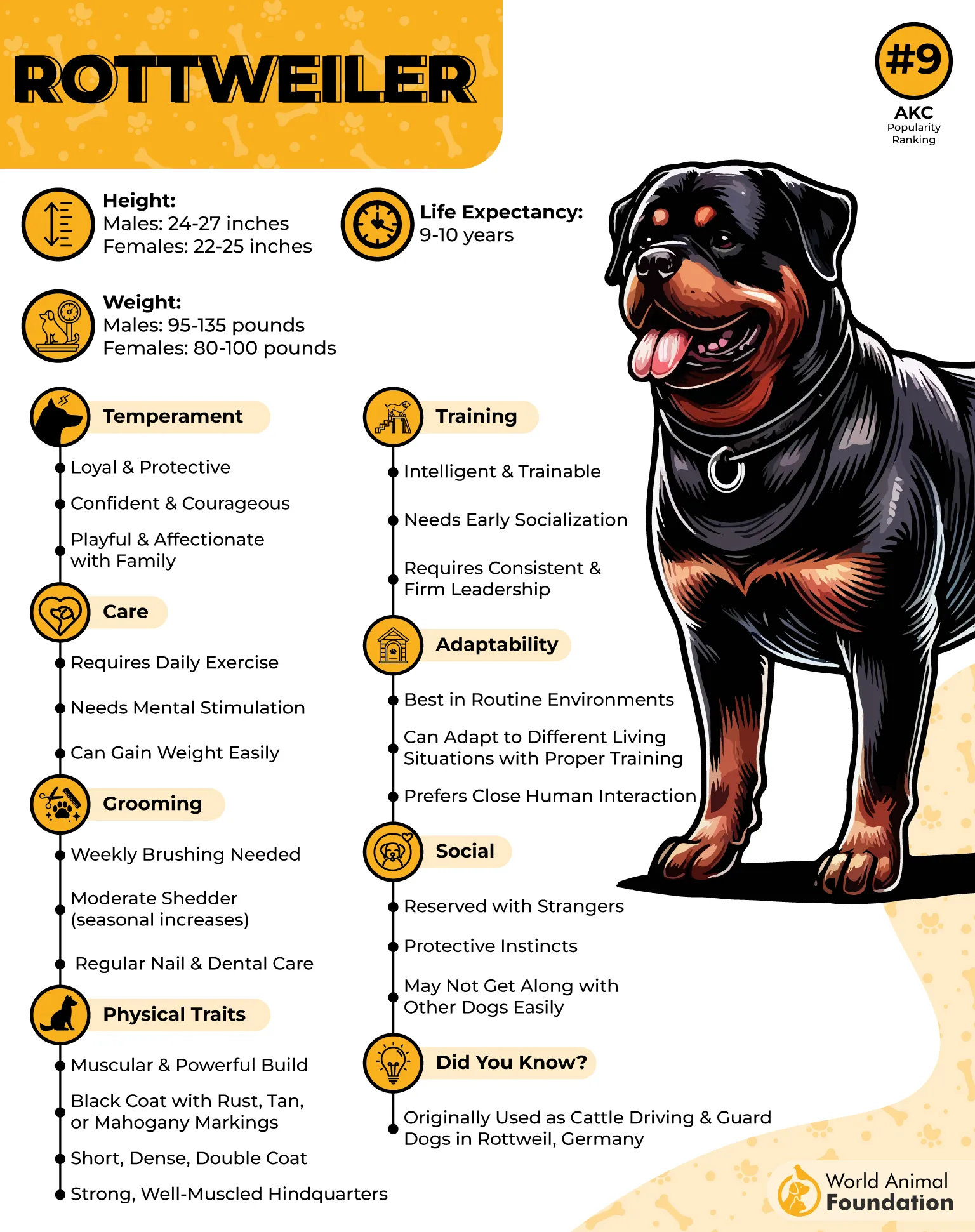
Rottweilers are quick to notice changes in their surroundings and will alert their owners to unfamiliar sounds or movements. Their strong protective instincts ensure that they remain vigilant, always ready to defend their family and territory from any perceived threat.
The breed’s temperament is a balance of loyalty, confidence, and calmness. While they are naturally protective, Rottweilers are not overly aggressive. They are composed and discerning, knowing when to react and when to remain calm, making them reliable protectors and companions.
PDSA states Rottweilers are highly intelligent, which enhances their alert nature. Their ability to make quick decisions is crucial in roles like search and rescue, where time is of the essence. Their intelligence also makes them highly trainable, ensuring that they stay focused and responsive on the job.
Rottweiler’s combination of alertness, intelligence, and protective instincts makes it an outstanding working dog. With proper training, they excel in various roles while remaining loyal and friendly to their families.
5. Akita
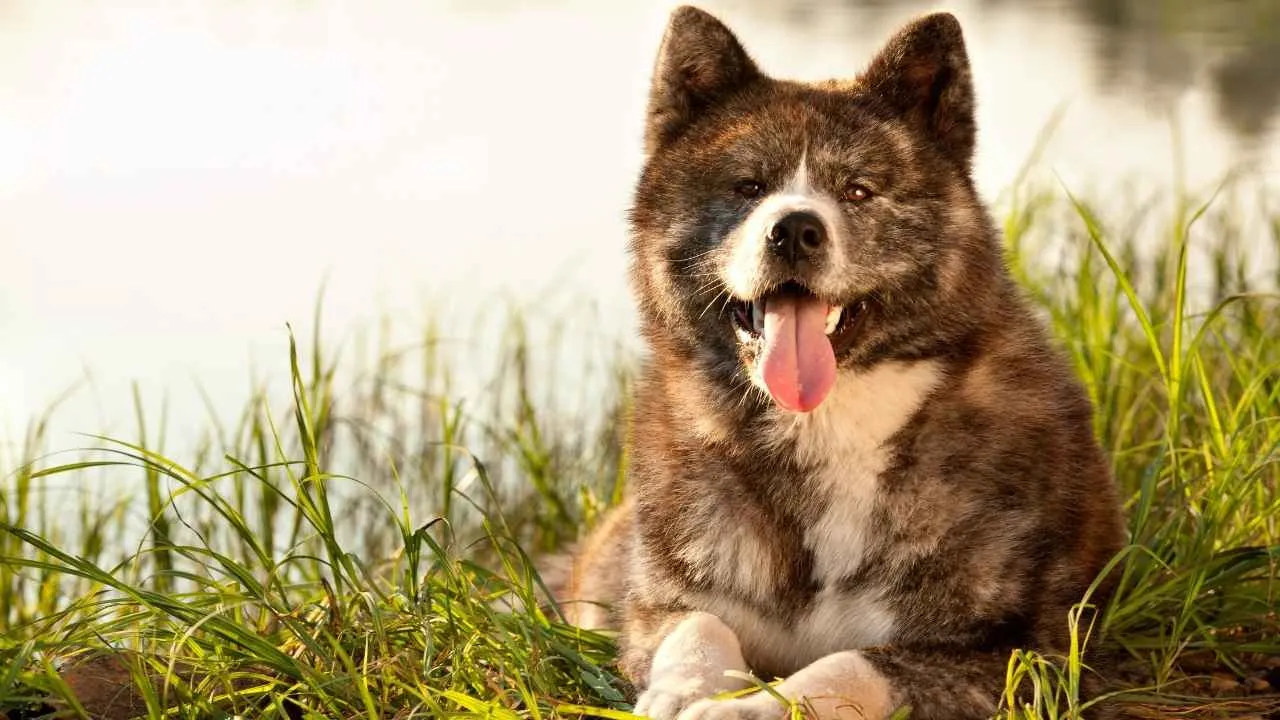
The Akita is a powerful and alert dog breed known for its keen instincts and strong protective nature. Originally from Japan, Akitas were bred for hunting large game such as bears, boars, and deer. This history of guarding and hunting has honed their alertness, making them quick to detect changes in their environment.
Historically, the Akita was highly valued in Japanese culture, often associated with loyalty and courage. In feudal Japan, they were used to guard royalty and serve as hunting dogs. Their lineage as a working breed has made them particularly suited for roles that require strength, bravery, and alertness. Over time, Akitas have been kept not only as working dogs but also as protective family pets, prized for their unwavering loyalty and devotion.
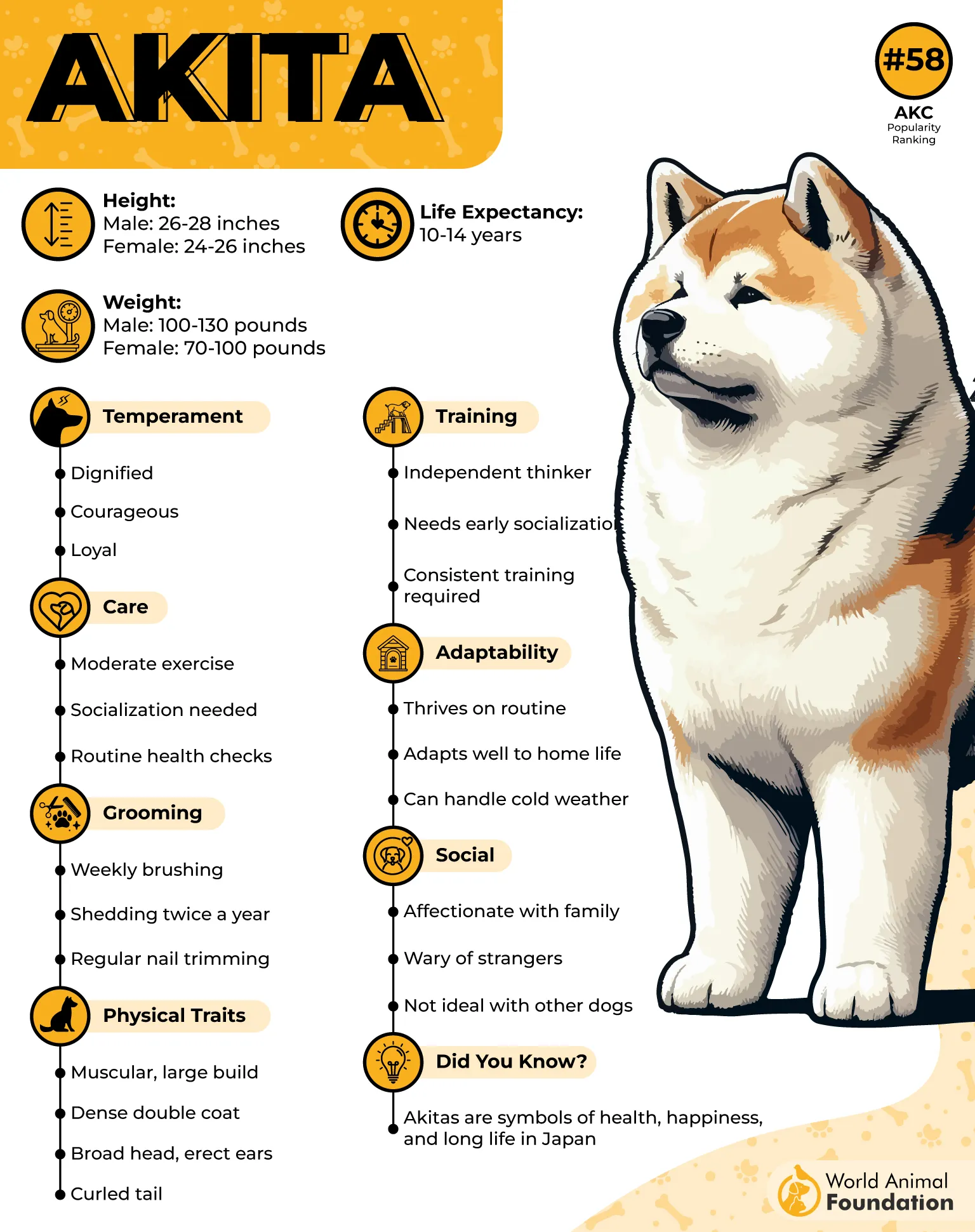
Akitas excel in roles that require guarding and protection, making them excellent watchdogs. Their alert nature means they will quickly recognize a potential threat and respond with determination. While they are naturally protective of their families, their independent and sometimes aloof demeanor means they may not always seek social interaction, particularly with strangers. This trait makes them great guard dogs, as their instinct is to protect rather than seek attention.
Britannica states Akita’s temperament is dignified, loyal, and courageous. While they can be reserved and even standoffish with strangers, they are deeply devoted to their families. Their protective instincts are balanced with affection and loyalty, forming strong bonds with their owners.
Akitas are often referred to as “gentle giants” due to their powerful build and strong character, but their affectionate nature and loyalty toward their families. However, their strong-willed nature can make them more challenging to socialize and train, requiring consistent leadership and patience.
Training an Akita can be a challenge due to their independent nature and stubborn streak. While highly intelligent, they may not always be eager to please, which can make training a bit more difficult compared to more obedient breeds.
However, with proper socialization from an early age and firm, consistent training, Akitas can be well-behaved and responsive. Positive reinforcement methods work best, as they appreciate respect and clear guidance rather than forceful tactics.
6. Giant Schnauzer
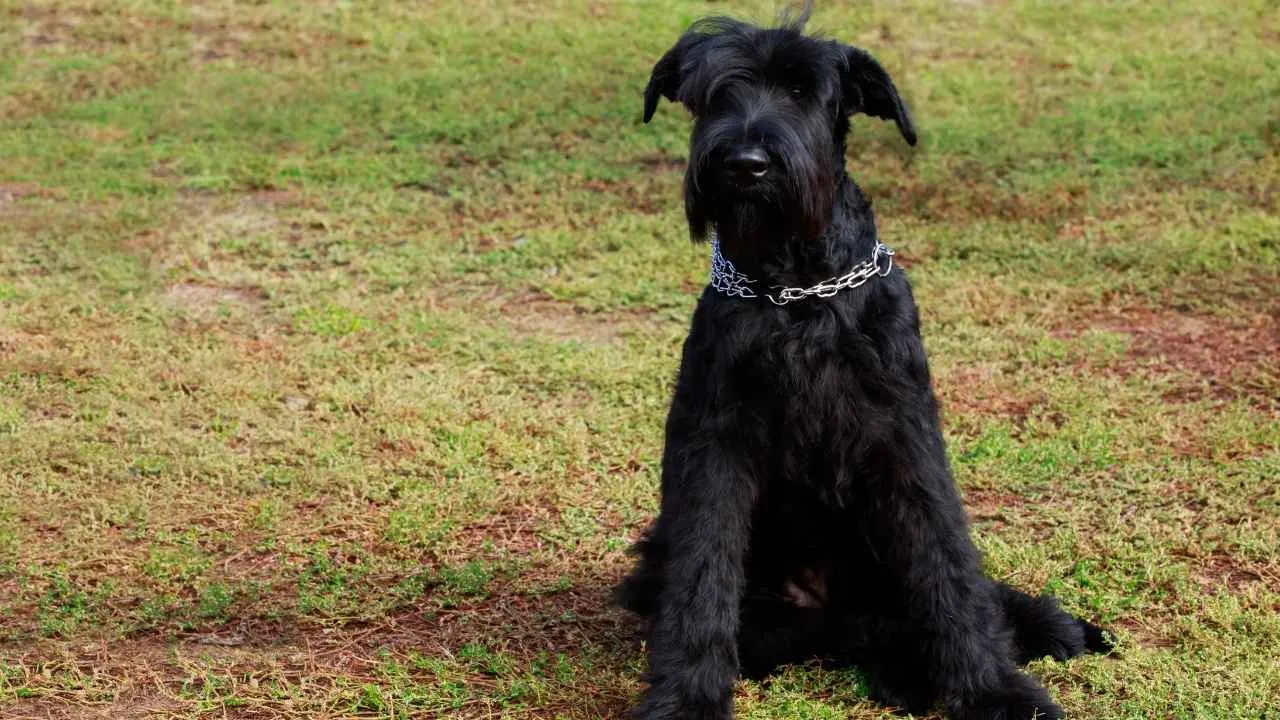
The Giant Schnauzer is a powerful working dog, originally bred for herding cattle and guarding breweries. Today, it excels in roles such as police, military, and search and rescue. Its keen instincts and strong protective nature make it an ideal alert dog, always vigilant and quick to respond to potential threats.
With a natural alertness, the Giant Schnauzer is constantly on the lookout for changes in its environment. Whether on guard duty or engaged in a working role, it quickly detects any unusual activity. This breed’s sharp senses and protective instincts ensure that it remains focused and reliable in any setting, making it an effective guard dog.
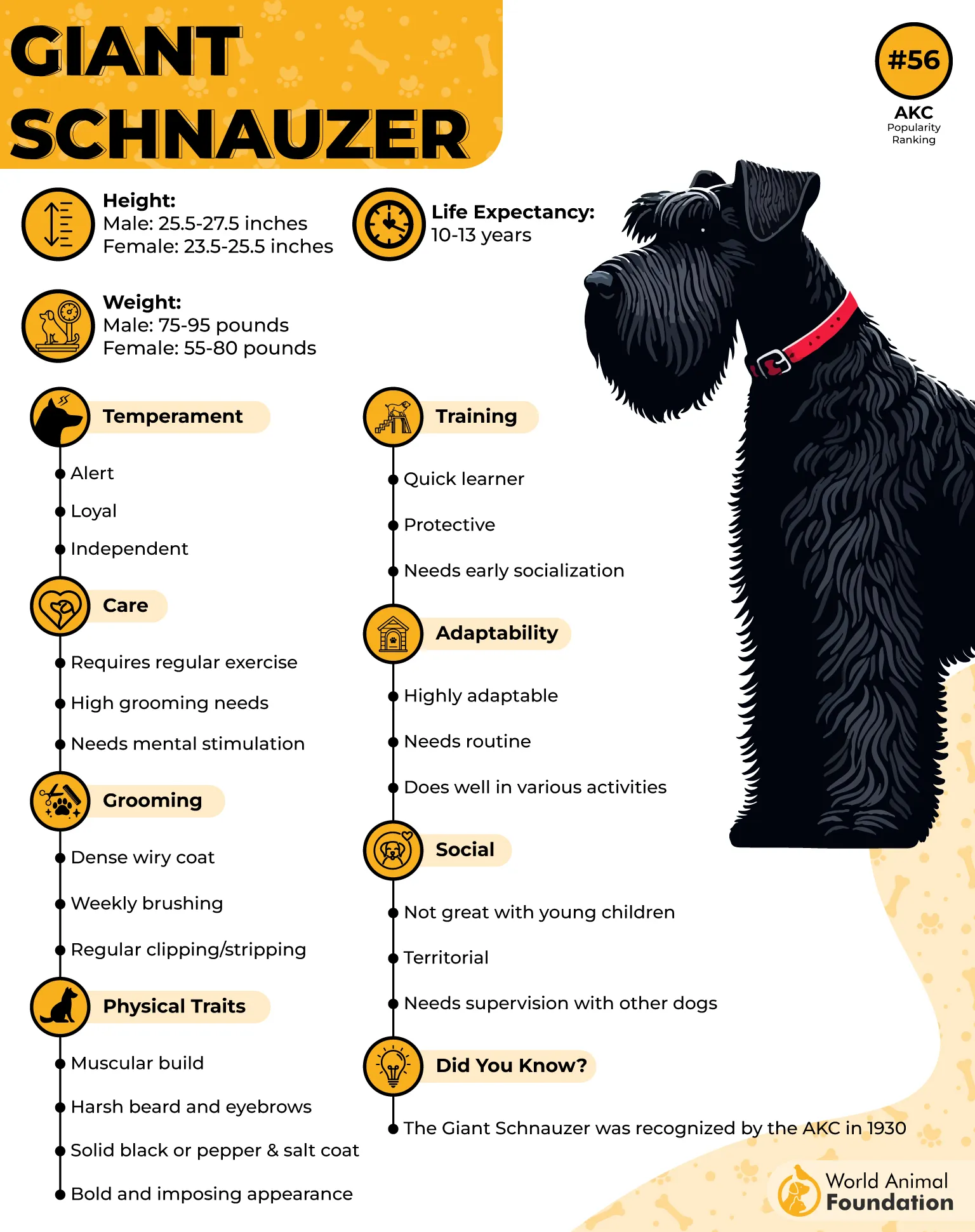
Giant Schnauzer is a versatile breed, ideal for working roles. With its protective instincts, grooming needs, and loyal temperament, it makes a strong companion for active families or individuals willing to commit to proper training and care.
Grooming the Giant Schnauzer requires regular attention, as it has a dense, wiry coat. Brushing is necessary to prevent matting, and the coat should be hand-stripped or clipped every few months to maintain its distinctive look. Regular ear and nail care is also essential to keep the dog healthy and comfortable.
Temperamentally, the Giant Schnauzer is loyal, confident, and courageous. While it is affectionate and protective of its family, it can be wary of strangers. Early socialization is crucial to prevent territorial behaviour, ensuring that the dog is well-mannered around people and other animals.
Training the Giant Schnauzer is rewarding but requires consistency and clear leadership. Highly intelligent and eager to please, this breed responds well to positive reinforcement but benefits from firm, structured training. Its independent streak means that firm guidance is necessary to maintain good behavior.
7. Cane Corso
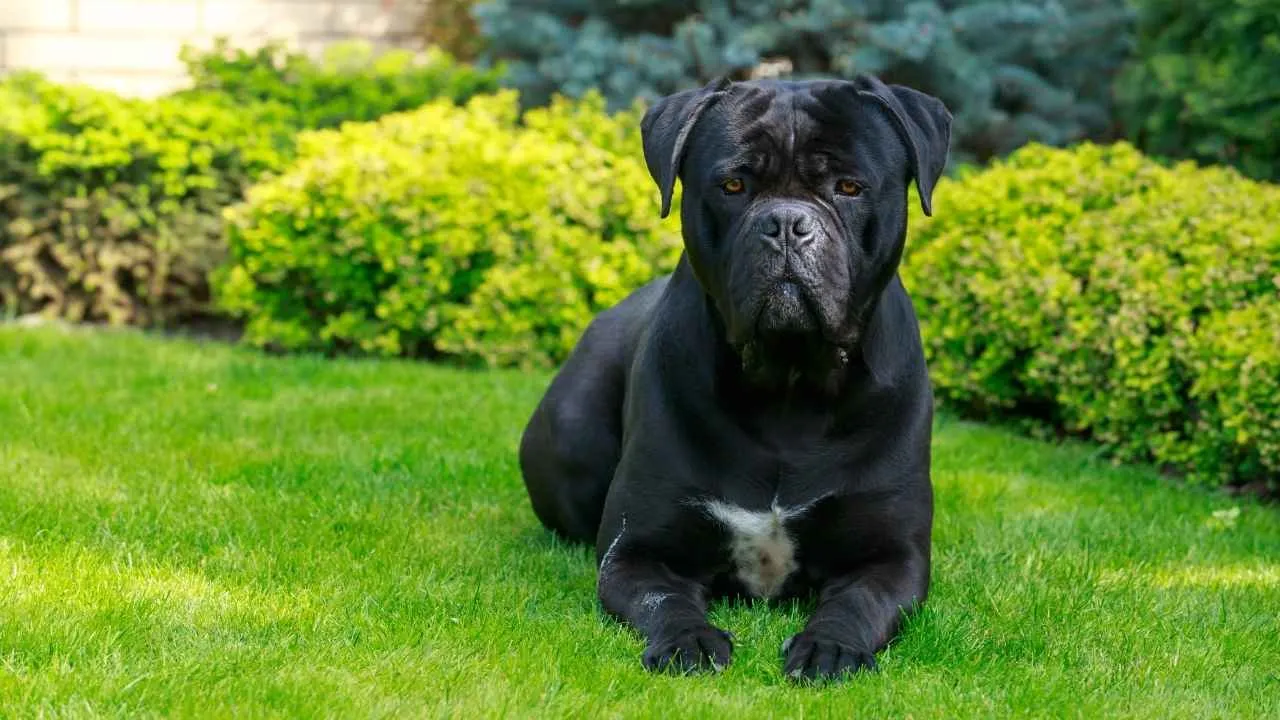
The Cane Corso doesn’t need to bark to make a statement—its presence alone speaks volumes. With a vigilant stare and a poised, muscular frame, this breed has long served as a guardian of homes, farms, and families. But its alertness isn’t loud or nervous—it’s steady, grounded, and intensely focused. This is a dog that notices everything: a subtle shift in body language, a faint sound outside, an unfamiliar scent carried on the wind.
Bred in Italy for protection and farm work, the Cane Corso has always been wired for specific tasks. Whether it was driving livestock or guarding the perimeter, it excelled not just because of its strength but because of its watchfulness and deliberate response to potential threats. This isn’t a dog that reacts blindly; it calculates, chooses, and then acts—if necessary.
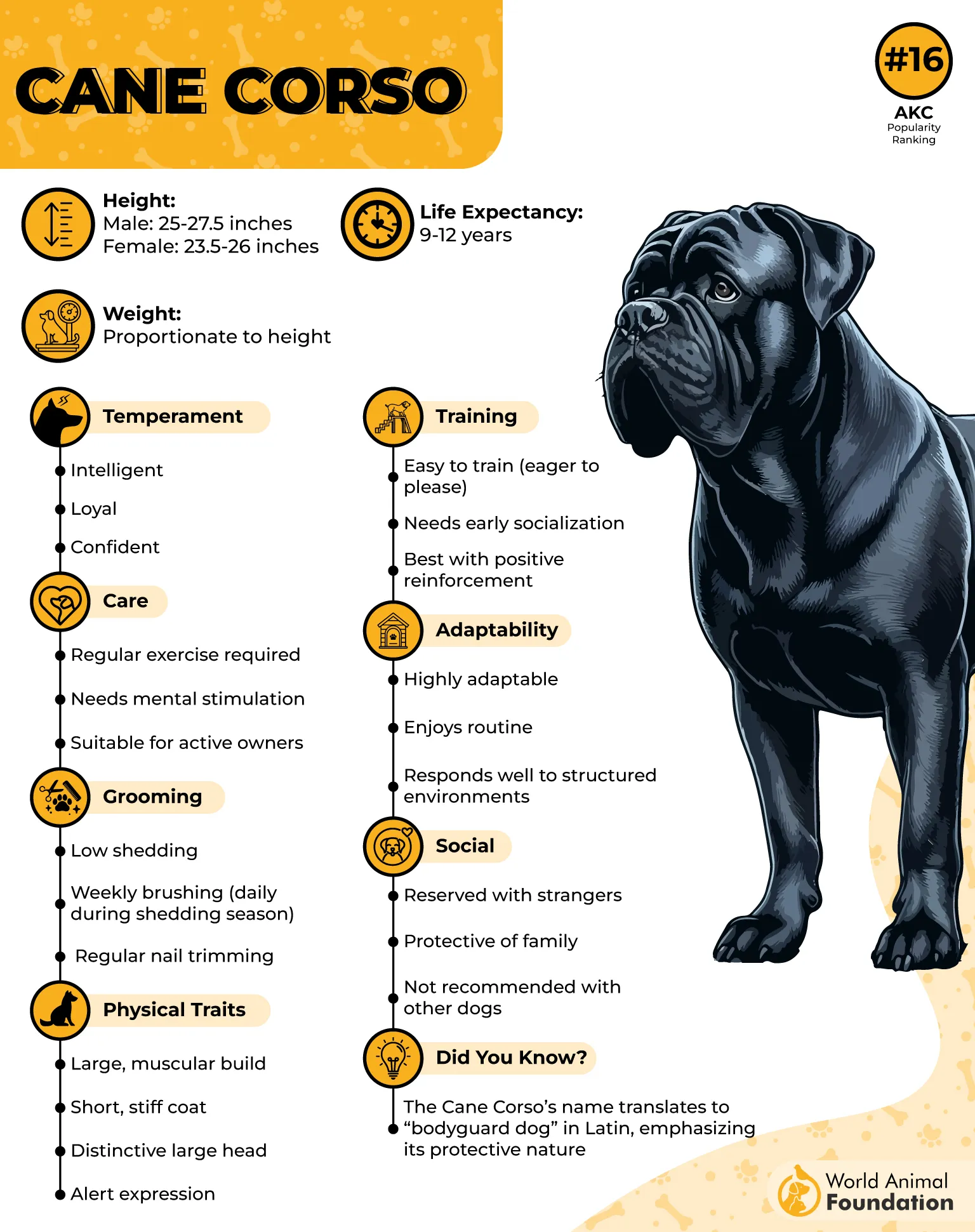
Their capacity for intense work is deeply ingrained. They thrive in roles that demand not only physical endurance but also mental engagement. A bored Corso can become restless, but one with a job—guarding a property, patrolling with purpose—channels its natural awareness into sharp, controlled focus. Its working life is about more than obedience; it’s about trust and instinct forged into a powerful, balanced force.
Despite the imposing build, Cane Corsos are deeply loyal and emotionally tuned in. They form a strong bond with their people, often becoming incredibly attuned to household routines and family dynamics. That closeness enhances their alert nature, making them quick to notice even the slightest changes, whether it’s a strange noise at the door or a shift in their owner’s mood.
While not excessively hyper, they do bring high energy to everything they do. It’s not chaotic energy—it’s purposeful. When engaged, they move with precision and strength, carrying out commands or defending territory with conviction. Their eagerness to work and protect is driven by loyalty, not aggression.
And yes, like any robust breed, they shed—a small price to pay for the devotion and security they offer. But more than anything, it’s their unique characteristics—calm confidence, keen perception, and quiet intensity—that make the Cane Corso not just alert, but exceptional in its role. This isn’t your average watchdog; it’s a dignified sentinel, always present, always ready.
Conclusion
When it comes to selecting alert dog breeds, it’s important to understand that not all dogs are naturally inclined to perform service dog work or excel at specific service dog tasks. However, several breeds—such as Labrador Retrievers, Golden Retrievers, and German Shepherd Dogs—consistently stand out among the most popular service dog choices due to their sociable nature.
These excellent service dogs are often chosen for roles such as hearing dogs, guide dogs, and medical alert dogs, where traits like sensitivity to loud noises, ability to retrieve items, and consistent behavior are essential.
Breeds like the Bernese Mountain Dog, Border Collies, Boxers, and even Cocker Spaniels also make good service dog candidates, depending on the needs of the handler and the service tasks required, ranging from psychiatric support to mobility assistance.
With proper service dog training, these purebred dogs can perform tasks that dramatically improve the quality of life for people with physical disabilities or medical conditions like low blood sugar. Still, other dogs with the right qualities, even if not traditionally among the top service dog breeds, can be well suited for roles such as therapy dogs or emotional support animals.
Ultimately, choosing an effective service dog depends on many important factors—from dog training and temperament to size, stamina for long hours, and the ability to handle various tasks. Whether you’re drawn to the playful yet athletic Collie, the alert and energetic Boxer, or one of the common service dog breeds, remember that matching the right dog to the right service work is what truly ensures success in this vital partnership.


